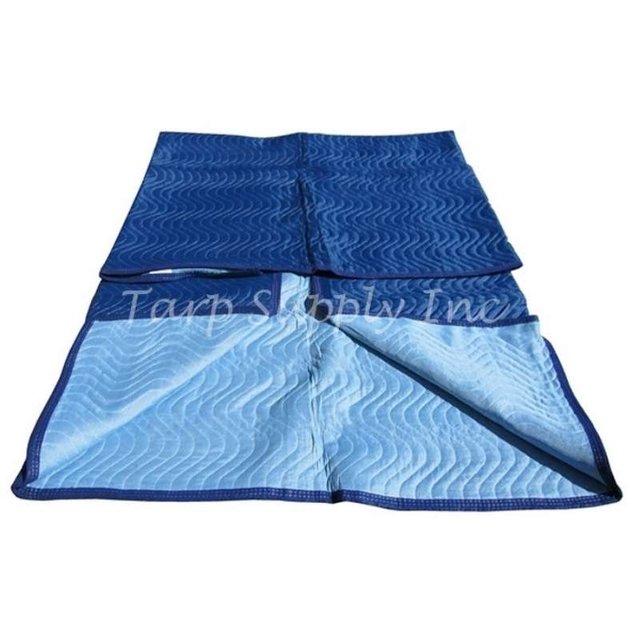Moving Blanket Care: Wash & Maintain Tips
Introduction: Make Your Moving Blankets Last Longer
Moving blankets are a trusted go-to for protecting furniture, appliances, and fragile items during transport or storage. Whether you're a professional mover or a DIYer, these durable quilted pads offer a reliable layer of defense against scratches, dust, and impact. But like any hardworking tool, moving blankets need proper care to stay effective over time.
Cleaning and maintaining your moving blankets can extend their lifespan, preserve their protective qualities, and save you from having to buy replacements too soon. In this guide, we’ll walk through everything you need to know about washing, storing, and maintaining your moving blankets the right way.
1. Can You Wash Moving Blankets? Yes—But Read This First
The good news: yes, most moving blankets can be washed. But before you toss them in your washer, it’s important to check the material and construction type.
Heavy-duty moving blankets are typically made of a blend of cotton, polyester, and sometimes recycled fibers. These materials can usually handle washing machines, but it’s crucial to follow these rules:
Always check the manufacturer’s care label. Some blankets have specific cleaning instructions based on their stitching and fill type.
Avoid top-loading washers with agitators. These can snag the stitching or rip the material. Use a front-loading washer or take them to a laundromat with a commercial machine.
Use cold water and gentle detergent. Hot water may cause shrinkage or damage the outer fabric. Skip bleach or fabric softeners, which can degrade the fibers.
Pro tip: Wash blankets separately to avoid overloading your machine and ensure a thorough clean.
2. Drying Your Moving Blankets the Right Way
After washing, proper drying is key to maintaining the structure and softness of your blankets. Wet moving blankets are heavy, so handle them with care to avoid tearing the seams or damaging your dryer.
Here’s how to dry them correctly:
Use low heat or air-dry settings in a commercial dryer
Avoid high heat, which can melt synthetic fibers or cause the fill to bunch up
Shake out the blankets halfway through the cycle to redistribute the padding evenly
Air-dry over railings or lines if you don’t have a large enough dryer
Be patient—moving blankets may take longer to dry than regular laundry, but keeping them intact is worth the extra time.
3. Spot Cleaning for Quick Fixes
If your moving blankets have small stains, dirt, or pet hair but don’t require a full wash, spot cleaning is a fast and effective solution.
Here’s what to do:
Use a damp cloth with mild soap to gently scrub affected areas
For greasy stains, try a small amount of vinegar or baking soda mixed with water
Use a fabric brush or lint roller to remove hair, dust, or debris
Let the spot air-dry completely before folding or storing
Spot cleaning is especially useful for light maintenance between major moves or if the blankets are used in storage or as furniture covers.
4. How to Store Moving Blankets Properly
Proper storage ensures that your blankets stay clean, fresh, and ready to use the next time you need them. Follow these tips to avoid mildew, odors, or damage during long-term storage:
Store blankets in a cool, dry place, such as a storage closet, garage, or sealed bin
Avoid direct sunlight, which can fade fabric over time
Fold blankets neatly to prevent wrinkles, creases, and compressed padding
For extra protection, use vacuum-sealed bags or plastic containers to guard against moisture and pests
If your blankets have been exposed to damp conditions or are stored in humid areas, add silica gel packs or moisture absorbers to prevent mold growth.
5. Regular Inspections: Spot Damage Before It Spreads
Moving blankets are tough, but like any fabric item, they can wear out over time. Conducting routine inspections helps you catch minor issues before they become big problems.
Look for signs of:
Torn seams or holes
Fraying edges or loose stitching
Compressed fill that no longer offers padding
Lingering odors or mold spots
Repairing minor damage with a needle and thread or patch kit can extend the life of your blankets. If a blanket is beyond repair, consider repurposing it as a shop rag, floor cover, or padding for storage shelving.
Conclusion: Care More, Replace Less
Moving blankets are an essential part of any relocation toolkit—and when cared for properly, they can serve you for years. By learning how to wash, dry, store, and maintain them the right way, you’ll get the most value out of every blanket while keeping your items protected move after move.
Whether you use them for residential moves, commercial jobs, storage, or home projects, taking the time to care for your moving blankets isn’t just smart—it’s a cost-effective and eco-friendly choice.
